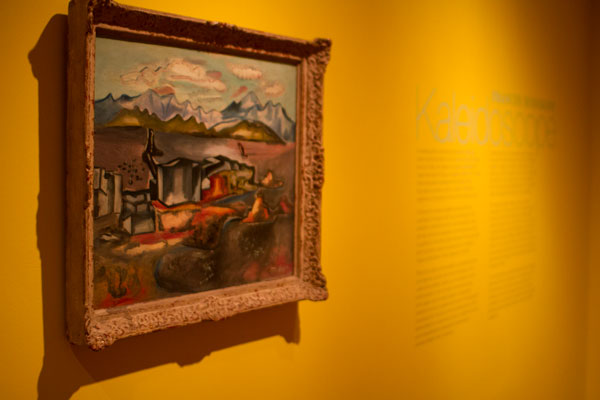Ordinary But Not
Dunedin Public Art Gallery
28 April-28 October
Even if you know nothing about New Zealand art, the name Frances Hodgkins probably rings a bell, and with good reason. Born in Dunedin in 1869, Hodgkins rose to fame in the early twentieth century, experimenting with an expressive painting style à la Matisse during her time in France and Britain. Today she is considered one of New Zealand’s most prestigious artists, as evidenced by the fellowship in her name at the University of Otago, which was established in 1962 and has been awarded to such notable artists as Ralph Hotere, Grahame Sydney, Shane Cotton and most recently Kushana Bush (whose exhibition All Things To All Men I reviewed earlier this year).
The expressive painting style that Hodgkins developed while living abroad propelled her into the spotlight, and it’s not difficult to see why. The Dunedin Public Art Gallery’s exhibition Kaleidoscope displays works from this time in Hodgkins’ life, emphasising how her style became much more unique and defined in her mid-late painting career. Hodgkins’ forte was still lifes and portraits, which subject matter-wise is fairly run-of-the-mill, but her uniquely ambiguous rendering of shapes and forms breathes life into her artwork. In her landscapes, although typical objects may not be immediately identifiable, the at times confused merging of foreground and background through the blended figures of sky, tree and houses truly draws the eye, compelling the viewer to attempt to make sense of what each painting is saying. Though Hodgkins’ landscapes portray ordinary scenes such as rural farms, city streets, and seaside views, her passionate brushwork crackles with liveliness, expressing an emotional state rather than a simple physical perspective. The everyday is infused with colour and vivacity. Feeling – positive, negative and everything in between – is removed from the abstract and becomes literal through Hodgkins’ magic touch.
Hodgkins’ portraits are similarly treated, and again the subject matter is made all the more powerful because of it, perhaps simply because there is something inherently haunting and thrilling about contemplating humanity through art. Faces are blurred, sometimes seemingly in motion. Bodies lack a perfectly defined physical outline, sometimes fading into the background, other times aligning through gradients of colour with figures beside them. Looking harder or longer doesn’t necessarily reveal any more clear-cut details. Indeed, the more you stare, the vaguer everything seems. It’s not that different to how we go through everyday life, to be honest. Some things are in focus, sure, but it’s easy to forget the part our peripheral vision constantly plays, quietly adding depth and detail to our world without our full attention. Hodgkins’ portraits are a whir of muted neutral tones (generally with one flash of vivid colour), large smudged strokes, light shadows, and loose scribbly outlines that somehow manage to define forms while at the same time merging them.
Like I said, it’s not difficult to see why Hodgkins is lauded as one of our most influential painters. Her inspired use of colour, as well as those stunningly expressive forms and shapes, make one itch to pick up a paintbrush and start experimenting. If only creating a masterpiece was as easy as that!



